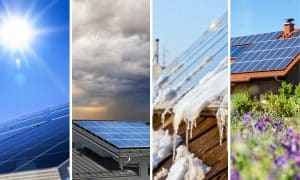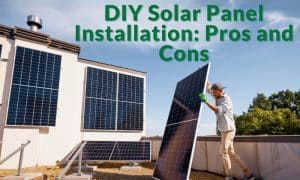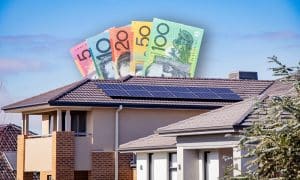On This Page
Not all Australians can take full advantage of using renewable energy because, among other things, they may rent their homes, have shaded roofs, have too small roof spaces to support economically effective solar PV generation, or live in shared apartment buildings with shared roof space.
Community solar is a group of communities that engages, invests, operates, and earns the rewards of energy efficiency, or a renewable energy project, based on a common interest or geographical location.

How does community solar work?
A community solar project is a large, central solar power plant with electricity shared by more than a single household or business and co-owned by nearby community members. Included are those who did not previously have access to solar power generation, such as those without a suitable roof for solar panels.
To help achieve the projects, the Australian government, investors, local not-for-profit or social enterprise organisations, and community cooperation will receive the resources, legal advice, technical expertise, and start-up funding to successfully implement solar projects in their community.
Energy Matters has a nationwide network of trusted local installers ready to provide you with up to 3 Free Solar Quotes. Complete our quick quiz and begin your solar journey today!

The Victorian state government supports community solar and established a methodology to calculate electricity payments for generators and provide compensation instead of tariffs. The methodology includes both a fixed and variable component, the latter based on the nameplate capacity of the power station, and it applies to most types of electricity generators. Still, it does not include solar as a fuel source.
The approach calculates a variable charge based on power generation supplied to the grid. It has been implemented for community and smaller commercial solar and wind producers up to 25 MW capacity. The adjustments were meant to promote more community projects, lower access barriers for smaller renewable energy producers and guarantee councils receive enough money to support local services.
Community solar programs and projects in Australia
Hepburn community wind farm
The Victorian Government supports the community cooperative Hepburn Wind, which also developed and owns the wind farm known as The Hepburn Wind Project. The project is located in Leonards Hill, a suburb of Melbourne, Victoria. It consists of two separate 2.05 MW wind turbines provided by REpower System AG, each of which is expected to generate enough energy for 2,300 families or roughly as many as there are in the twin towns of Daylesford and Hepburn Springs.
Hepburn Wind, Australia’s first community-owned wind farm, has been operating since June 2011, and they are now working on adding solar and battery storage.
The wind farm produces enough electricity each year to power 2,100 households.
The Marlinja Solar Community Centre
Marlinja outstation people in the Barkly region of the Northern Territory started re-powering their community with affordable, clean energy in May 2021. The Marlinja Community Centre is a partnership between the Marlinja community and Original Power’s Clean Energy Communities Project which is working to empower Indigenous communities to take the lead on the remote renewables revolution through the incubation of community-owned solar projects across the Northern Territory.
The solar-powered community centre will serve as a focal point for cultural, familial, and educational events and a refuge from the periodic blackouts that afflict nearby homes.
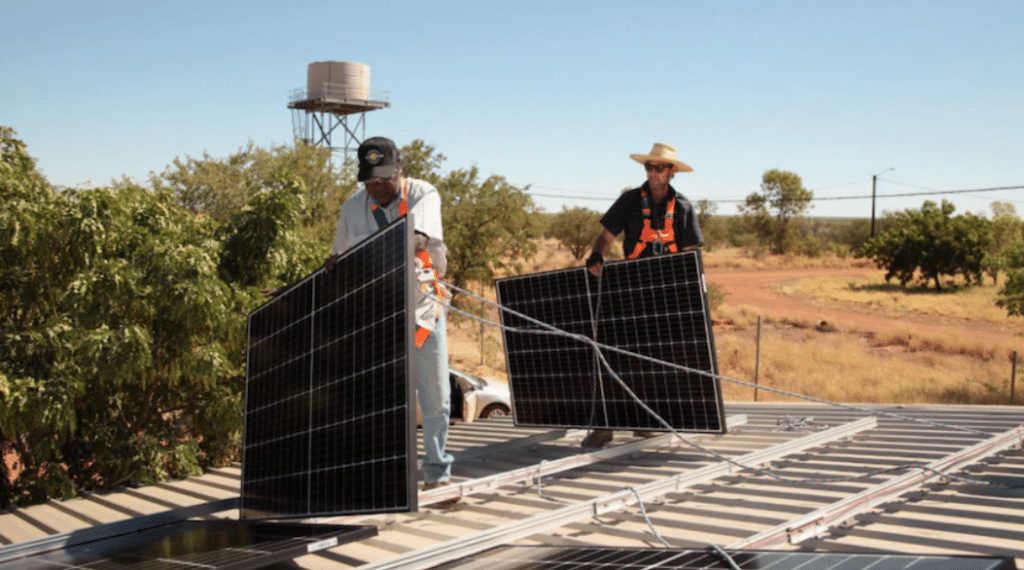
Lismore Community Solar initiative
The Lismore Community Solar venture, which includes Australia’s largest floating solar farm, was officially launched in January 2018 by Lismore City Council and Farming the Sun. It is the first council and community-owned solar farm in the nation. A rooftop solar farm at the Goonellabah Sports & Aquatic Center and a floating solar farm on the overflow ponds at the East Lismore Sewage Treatment Plant were both developed by the Council as part of the Lismore Community Solar initiative.
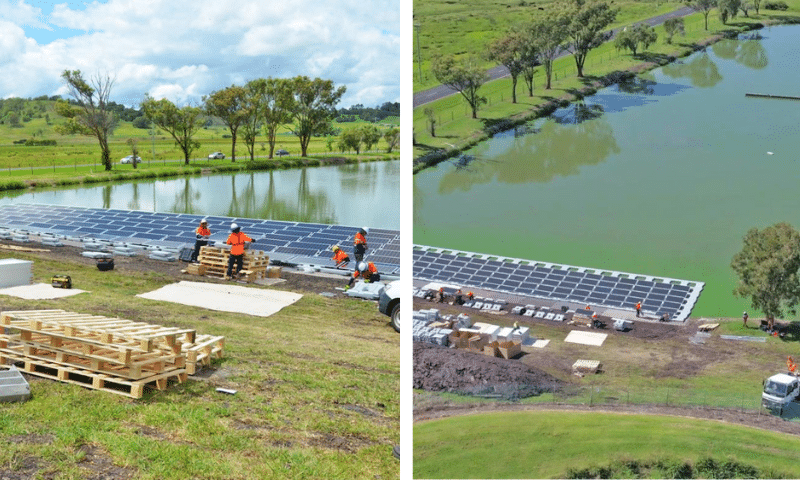
Both solar farms were funded by companies made up of 20 local investors, with the funds loaned to the Council under a financial model that is the first of its kind in Australia. This has generated interest nationally and internationally as a government and community cooperation model, with investors receiving a better return than a bank.
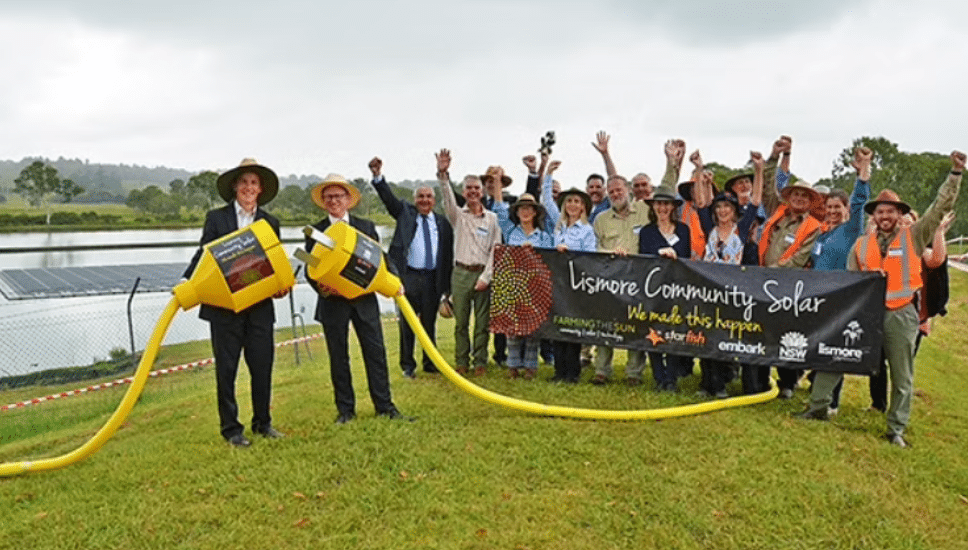
Majura community solar farm in Australia
One of Australia’s first major community renewable projects, a 1.3MW solar farm co-owned by 400 locals in and around the ACT’s Majura Valley. Around 550 members of the Canberra community, each of whom contributed between $500 and $100,000 to participate in Australia’s energy transition and earn a reasonable return in the process, jointly own the 1 MW generator.
Majura’s estimated $360,000 in annual revenue will be used to repay profits to investors correspondingly.
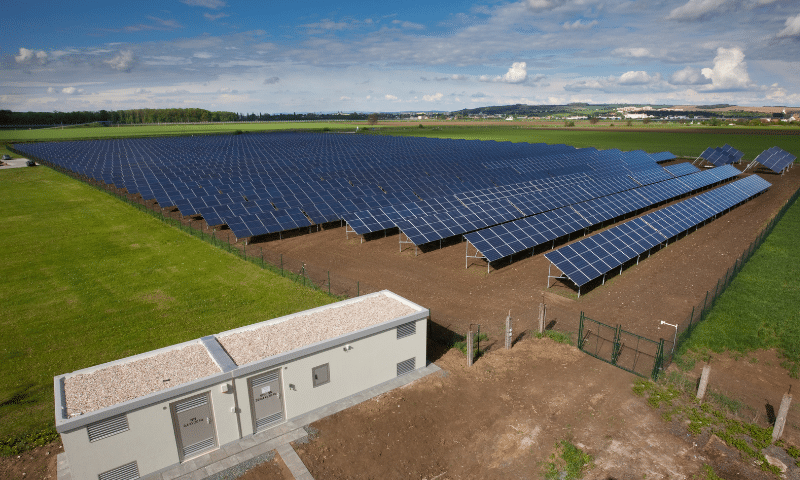
Community Power Hubs Programs in Victoria
The program empowered communities to be active participants in planning and decisions around the transition to renewable energy and enabled local environmental, social and economic benefits to be realised, including cost savings for local communities. It has also boosted Victoria’s renewable energy capacity which will contribute to meeting Victoria’s target of zero carbon emissions by 2050.
The delivery of this program to each region in Victoria in 2021 was an expansion of the successful 3 year Community Power Hubs Pilot Program, which developed 3 hubs in Ballarat, Bendigo and the Latrobe Valley in 2017.
Get rooftop solar panels in Melbourne. Energy Matters has a nationwide network of trusted local solar installers in Melbourne that you can access today that can provide you with up to 3 Free Solar Quotes. Complete our quick quiz and switch to solar in Melbourne today.












